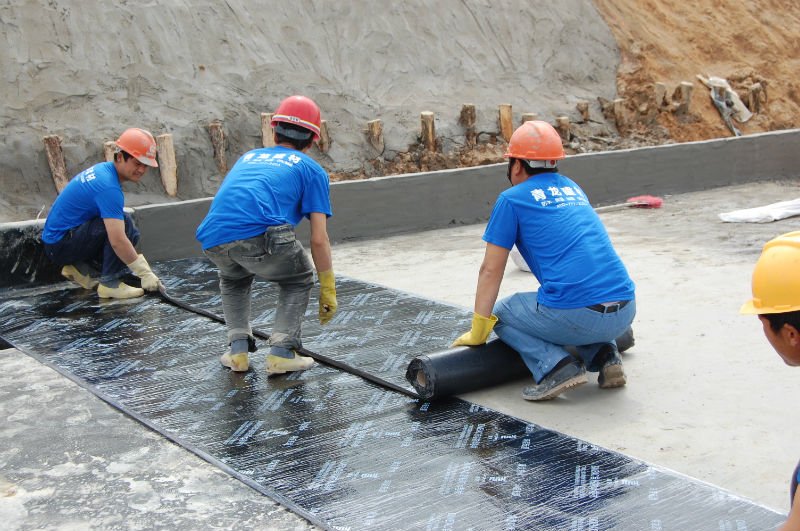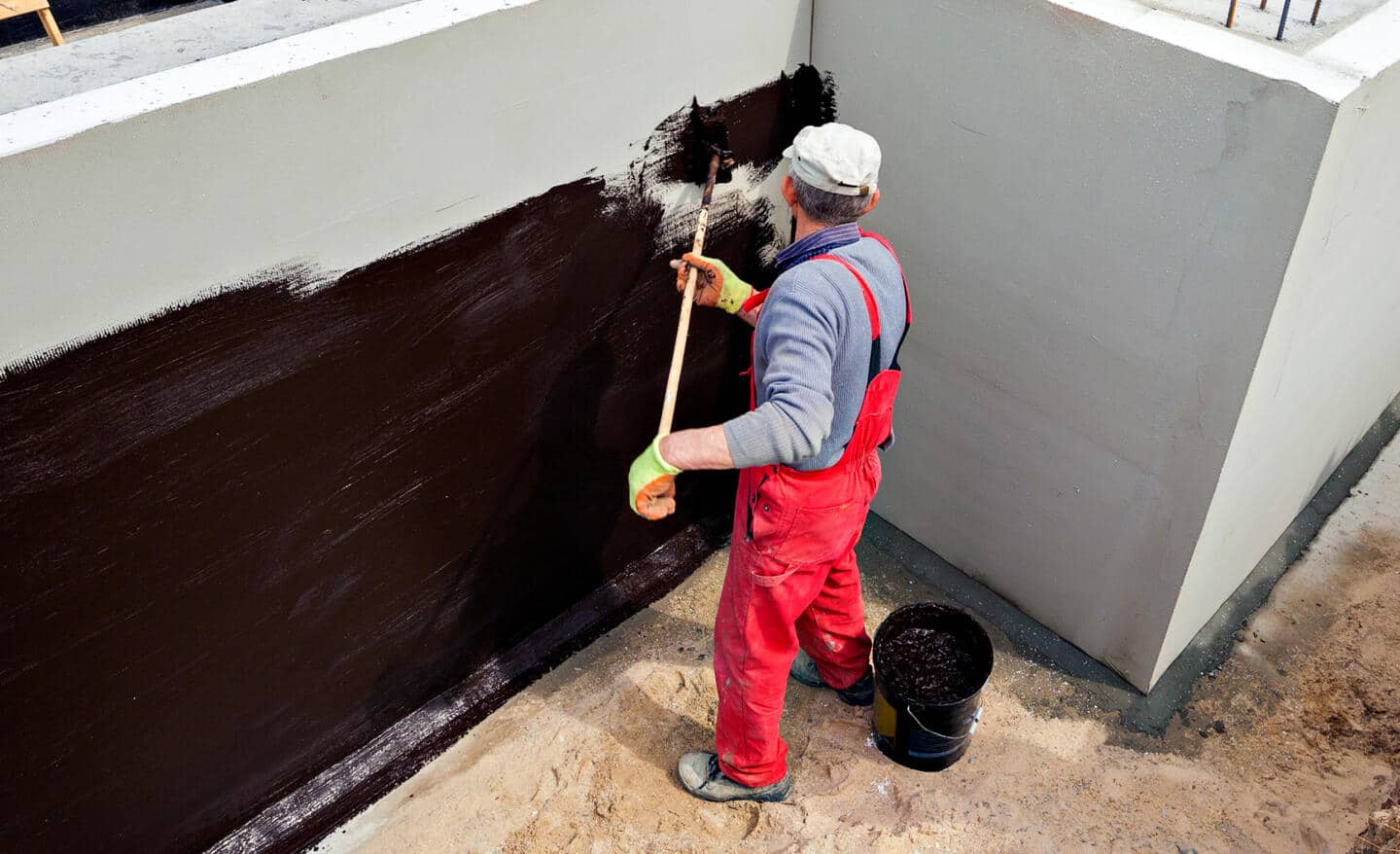Exactly How Waterproofing Functions: An In-depth Consider Techniques and Technologies
Waterproofing is important for safeguarding structures from moisture-related damages. It entails different methods and technologies that create obstacles against water intrusion. Traditional approaches, such as compacted clay, coexist with modern technologies like liquid-applied membrane layers. Understanding the nuances of these approaches is essential for efficient application. Nevertheless, the effectiveness of any kind of waterproofing service pivots not just on the techniques made use of however also on recurring maintenance and examination. What are the key aspects that affect lasting efficiency?
Comprehending the Basics of Waterproofing
Waterproofing is a necessary process that shields structures from water intrusion, which can cause significant damages over time. This technique entails the application of various products and strategies developed to develop a barrier against dampness. The main objective is to avoid water from passing through surface areas, which can cause degeneration, mold and mildew development, and structural instability.Various elements affect the selection of waterproofing method, including the sort of structure, its place, and ecological problems. Understanding the physics of water movement and the buildings of various materials is essential in picking an effective waterproofing solution.Effective waterproofing not only safeguards buildings however additionally boosts their durability and stability. Commonly, it is incorporated right into the layout stage of construction to assure comprehensive protection. As understanding of water-related problems grows, the value of comprehending waterproofing basics ends up being progressively clear to designers, home builders, and property proprietors alike.
Typical Waterproofing Techniques
Typical waterproofing techniques have been used for centuries, depending on time-tested techniques and materials to protect structures from water damages. Among the oldest methods entails using clay, which, when compressed, produces a natural obstacle versus moisture. Additionally, asphalt, a sticky, black product acquired from petroleum, has been used for its water-resistant homes, frequently related to roofing systems and foundations.Another technique entails the application of lime-based plasters, which supply a breathable layer that allows dampness to leave while stopping water ingress. Thatch roof covering, a standard approach still seen in some cultures, supplies superb waterproofing as a result of its firmly loaded straw layers.Moreover, using rock and brick has actually projected, as these materials are naturally resistant to water when properly mounted. Overall, typical waterproofing techniques emphasize the value of selecting appropriate products and construction methods to boost toughness against water invasion.
Modern Waterproofing Technologies
Developments in modern-day waterproofing technologies have actually revolutionized the method frameworks are safeguarded from water damages. Innovative methods such as liquid-applied membrane layers and advanced sealants have boosted the efficiency and flexibility of waterproofing solutions. These technologies enable seamless application, lowering the danger of leakages and ensuring extensive protection over intricate surfaces.Moreover, the integration of smart innovations, such as dampness sensing units and automated monitoring systems, allows real-time evaluation of waterproofing efficiency. This positive strategy helps with prompt maintenance and minimizes lasting fixing costs.Additionally, innovations in spray-applied coverings offer fast application and outstanding attachment, adjusting to numerous substratums while offering robust protection. Techniques like polymer-modified systems even more enhance adaptability and durability, making them suitable for varied settings. On the whole, modern-day waterproofing modern technologies not only mitigate water breach yet likewise contribute to the longevity and sustainability of structures, marking a significant change in the market.
Materials Used in Waterproofing
The effectiveness of waterproofing remedies greatly counts on the products made use of in their application. Different materials are used to produce barriers versus water access, each with one-of-a-kind homes suited for different settings. Generally made use of materials consist of membrane layers, finishings, and sealants.Liquid-applied membranes, frequently made from polyurethane or acrylic, create a smooth obstacle that adjusts to complicated surface areas. Sheet membranes, commonly created from rubber or polycarbonate, offer durability and are perfect for bigger areas. In addition, cementitious waterproofing products, made up of cementitious compounds, provide excellent bond and flexibility.Sealants made from silicone or polyurethane are important for joints and joints, making certain complete protection. Advanced products, such as geo-composite membrane layers, combine several features, enhancing performance. Overall, the choice of waterproofing products is vital in accomplishing durable and effective water resistance, tailored to certain project demands and ecological problems.
Common Applications of Waterproofing
Waterproofing plays a necessary duty in various fields, guaranteeing the durability and honesty of frameworks. Usual applications consist of residential services that shield homes, commercial infrastructure that safeguards companies, and industrial setups that call for durable security versus wetness. Recognizing these applications highlights the relevance of waterproofing in keeping both safety and functionality throughout different environments.
Residential Waterproofing Solutions
Numerous homeowners face difficulties with wetness intrusion, making effective residential waterproofing services important. Different techniques exist to address this concern, consisting of inside and exterior waterproofing systems. Interior solutions frequently involve the application of sealants and coatings to cellar wall surfaces, which assist protect against water infiltration. Outside techniques generally include the installment of water drainage systems and water resistant membrane layers that divert water away from the foundation.Additionally, home owners might think about sump pumps to remove water buildup and dehumidifiers to regulate moisture levels. Proper grading and making use of seamless gutters likewise play an important duty in taking care of water flow around the home. By implementing these approaches, house owners can significantly reduce the threat of water damage and mold development, guaranteeing a completely dry and risk-free living environment.

Business Framework Defense
Reliable waterproofing remedies play a critical role in the protection of business infrastructure. Foundation waterproofing Omaha. These techniques are important for protecting buildings, car parking structures, and bridges from water see here damage, which can compromise useful link architectural integrity and cause costly repair work. Typical applications include the installment of membrane layers, layers, and sealers that produce barriers versus wetness infiltration. Locations such as cellars, roofing systems, and exterior wall surfaces are usually focused on to guarantee longevity and toughness. In addition, waterproofing systems can improve energy performance by stopping water-related issues that might cause mold growth and wear and tear. By implementing durable waterproofing steps, residential or commercial property proprietors can secure their investments and maintain functional effectiveness, ultimately adding to the overall sustainability of business facilities
Industrial Applications Review
While different markets encounter unique challenges, the need for reputable waterproofing options continues to be a consistent in industrial applications. Industries such as manufacturing, construction, and power usually encounter environments where moisture direct exposure can endanger architectural stability and functional effectiveness. In producing facilities, waterproofing is important for protecting machinery and materials from water damage. In construction, it safeguards structures and cellars versus groundwater infiltration. The power sector counts on waterproofing for the defense of tools in hydroelectric plants and overseas frameworks. Furthermore, food processing industries use waterproofing to ensure hygiene and compliance with safety criteria. On the whole, reliable waterproofing options are essential for enhancing durability, safety and security, and performance across various commercial setups.
Maintenance and Long Life of Waterproofing Solutions
Waterproofing remedies are developed to provide long-term security against moisture breach, routine upkeep is vital to assure their efficiency and durability. Routine inspections play a substantial role in identifying possible my website concerns such as cracks, peeling off, or signs of water damages. Dealing with these problems without delay can avoid more wear and tear and pricey repairs.Additionally, cleaning up the surface area of waterproofed areas aids remove dirt and particles that can jeopardize the honesty of the waterproofing obstacle. It's also a good idea to reapply safety finishings or sealers as advised by producers to keep perfect efficiency. Ecological variables, such as UV exposure and extreme climate condition, can affect the life expectancy of waterproofing products, making normal analysis vital
Frequently Asked Concerns
Can Waterproofing Be Applied in Winter?
The inquiry of using waterproofing in winter increases worries regarding attachment and healing. Several products may not carry out at their finest in reduced temperature levels, requiring cautious choice and factor to consider of certain standards for reliable application.
The Length Of Time Does Waterproofing Typically Last?
The duration of waterproofing effectiveness varies based upon products and ecological variables. Usually, it can last from 5 to 10 years, however routine maintenance and evaluations are necessary to ensure peak performance and longevity.
Is DIY Waterproofing Effective and Safe?
The performance and safety and security of do it yourself waterproofing depend upon numerous factors, consisting of worldly high quality and application technique. While some individuals attain sufficient outcomes, others may experience issues that endanger lasting protection and architectural stability.
What Are the Signs of Failing Waterproofing?
Indications of falling short waterproofing consist of visible water discolorations, peeling off paint, mold development, mildewy odors, and dampness in wall surfaces or ceilings - Foundation waterproofing Omaha. These indications suggest endangered barriers, demanding timely inspection and possible remediation to protect against additional damages
Exactly how Do I Choose the Right Waterproofing Specialist?
